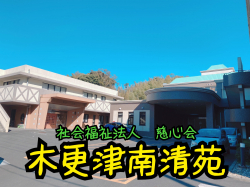Info Type
View Option
Sort by Month
Sort by Category
Back
This text has been translated by auto-translation. There may be a slight difference between the original text and the translation. (Original Language: 日本語)
2024/11/26 - 2025/1/26 / 千葉県 佐倉市 / Seasonal / Occasion

| Venue | National Museum of Japanese History, Kurashi-no-Botanical Garden |
|---|---|
| Address | 285-8502 千葉県 佐倉市 城内町117 |
| Date | 2024/11/26 - 2025/1/26 |
| Time | 9:30 minute(s) - 16:30 minute(s) |
- [Time detail]
Admission until 16 : 00.
●Closed days : Dec. 2 ・ 9 ・ 10 ・ 16 ・ 23, New Year's holidays ( Dec. 27 ~ Jan. 4 ) , Jan. 6 ・ 7 ・ 14 ・ 20
- [Getting here]
By train】
・ Take a bus from Keisei Sakura Station to Miyakoji-cho or National Museum of Japanese History, and get off at Miyakoji-cho or National Museum of Japanese History, and walk about 10 minutes or take a 25-minute walk from the station. About 35 min. on foot from the station
[By car]
・ About 15 min. from Yotsukaido IC or Sakura IC on Higashi-Kanto Expressway, next to Sakura Junior High School
- [Venue detail]
National Museum of Japanese History, Kurashi no Botanical Garden
117 Jonouchi-cho, Sakura-shi, Chiba, Japan
Kurashi-no-Botanical Garden Special Program "Winter Flower ・ Sasanqua
- [Contact]
- Hello Dial 050-5541-8600
- [Registrant]国立歴史民俗博物館
- [Language]日本語
- [TEL]050-5541-8600
- Posted : 2024/11/06
- Published : 2024/11/06
- Changed : 2024/11/06
- Total View : 87 persons








The sasanquas are divided into three main groups: the "sasanqua group," which is close to the native species; the "shishigashira ( camellia ) group," which is considered to be a seedling or a later generation of the lion's head; and the "harusasasanqua group," which is considered to be a naturally formed hybrid between the sasanqua and camellia or a later generation. Each group blooms in the above order from mid-October to February of the following year. All of these varieties were selected from seedling varieties, and the method of maintaining ・ and spreading these varieties is a major characteristic of Japanese horticultural culture. The Kurashino Botanical Garden has focused on the relationship between people and sasanquas from the perspective of both genetic resources and cultural assets, and has exhibited the results of its study of both living plants and historical materials.
In this exhibition, approximately 140 varieties of sasanquas will be displayed in potted plants around the pavilion and in greenhouses in the garden.
[Fee]
100 yen for individuals
*Free admission on January 12, 2025 ( ).
*Free admission for high school students and younger.
*Free admission for holders of disability certificates and their caregivers upon presentation of the certificates.
*General Exhibitions of the Museum ・ Special exhibitions are charged separately.
*Present the museum ticket stub and you can enter the Botanical Garden of Life on the same day.
Show the stub from the Botanical Garden and get a discount for admission to the Museum on the same day.
[Notes on the period of the exhibition]
*Park maintenance ・ The opening date ・ may be changed or events may be postponed or cancelled due to inclement weather or other reasons. Please check the museum's website and SNS for the latest information.